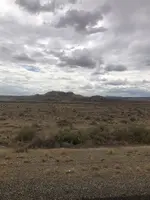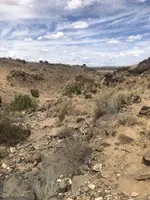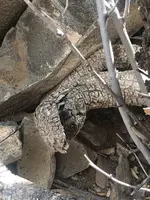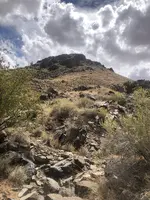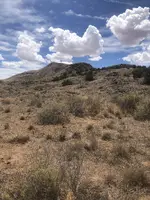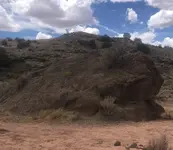- #221
Thread Owner
According to the research of others, Karl Von Mueller mentioned that the words LLORO URRACA ENTERRARI were found written on the LUE clue. The first letters of each word gave the LUE clue it's name. Some have speculated that it might also be a clue to solve the riddle of the LUE. The words translate to LLORO, to cry or weep, URRACA, magpie and ENTERRARI, to bury.
In northern New Mexico there is a mesa named Urraca, an interesting and mysterious place. Urraca Mesa is close to several locations where LUE caches have been found. Because of this, Urraca Mesa could be the URRACA of the LUE clue.
There is another URRACA close to the west base of Blanca Peak, the Urraca Pioneer Cemetery. This cemetery is located between Urraca Creek, to the north of the cemetery, and Pioneer Creek, to the south. I don't know if this place is the Urraca of the LUE clue, but the words LLORO, to cry or weep, and ENTERRARI, to bury, fit well with what would happen at a cemetery.
I believe this cemetery has a connection to the Kensington Runestone Map, the LUE clue and the KGC Template, as well as Treasure Mountain. I'll show you a map of the area and explain the evidence and you can decide for yourself.

You can see the location of the Urraca Pioneer Cemetery, just to the left of Blanca Peak. The cemetery is less than a mile north of the Kensington Runestone line shared by Treasure Mountain, Blanca Peak and Montvale, Virginia, further to the east.
The white line running from the cemetery to the southwest begins at a heading of 210 deg. which is a heading found on the LUE clue. This line passes just east of Pike's Stockade and over Sierro del Ojito and intersects a blue LUE clue line and a white Kensington Runestone line that comes from Treasure Mountain and is shared by Culebra Peak and Wildcat Bluff, Arkansas, to the east. One of sdcfia's friends translated Sierro del Ojito to mean, "watch out, be careful on that mountain" or "look carefully on that mountain".
The heading of the white line from Treasure Mountain begins at 103.5 deg. which is a heading found on the LUE clue and the KGC Template. The heading from Sierro del Ojito to Treasure Mountain begins at 283 deg. which is a heading found on the KGC Template.
The blue line at the intersection comes from the location that is represented by the center point of the large circle in the lower right quadrant of the LUE clue. This blue line starts at a heading of 150 deg. and extends further to the southeast to pass 4 miles east of Black Lake, New Mexico where several LUE caches were recovered.
So, this map shows the name Urraca with a connection to Treasure Mountain and Sierro del Ojito. I find Ojito, eye, especially interesting because I've found the eye associated with a clue or key.
In northern New Mexico there is a mesa named Urraca, an interesting and mysterious place. Urraca Mesa is close to several locations where LUE caches have been found. Because of this, Urraca Mesa could be the URRACA of the LUE clue.
There is another URRACA close to the west base of Blanca Peak, the Urraca Pioneer Cemetery. This cemetery is located between Urraca Creek, to the north of the cemetery, and Pioneer Creek, to the south. I don't know if this place is the Urraca of the LUE clue, but the words LLORO, to cry or weep, and ENTERRARI, to bury, fit well with what would happen at a cemetery.
I believe this cemetery has a connection to the Kensington Runestone Map, the LUE clue and the KGC Template, as well as Treasure Mountain. I'll show you a map of the area and explain the evidence and you can decide for yourself.
You can see the location of the Urraca Pioneer Cemetery, just to the left of Blanca Peak. The cemetery is less than a mile north of the Kensington Runestone line shared by Treasure Mountain, Blanca Peak and Montvale, Virginia, further to the east.
The white line running from the cemetery to the southwest begins at a heading of 210 deg. which is a heading found on the LUE clue. This line passes just east of Pike's Stockade and over Sierro del Ojito and intersects a blue LUE clue line and a white Kensington Runestone line that comes from Treasure Mountain and is shared by Culebra Peak and Wildcat Bluff, Arkansas, to the east. One of sdcfia's friends translated Sierro del Ojito to mean, "watch out, be careful on that mountain" or "look carefully on that mountain".
The heading of the white line from Treasure Mountain begins at 103.5 deg. which is a heading found on the LUE clue and the KGC Template. The heading from Sierro del Ojito to Treasure Mountain begins at 283 deg. which is a heading found on the KGC Template.
The blue line at the intersection comes from the location that is represented by the center point of the large circle in the lower right quadrant of the LUE clue. This blue line starts at a heading of 150 deg. and extends further to the southeast to pass 4 miles east of Black Lake, New Mexico where several LUE caches were recovered.
So, this map shows the name Urraca with a connection to Treasure Mountain and Sierro del Ojito. I find Ojito, eye, especially interesting because I've found the eye associated with a clue or key.



